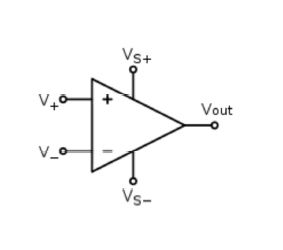You often hear the mantra that Analog Mixed-Signal (AMS) behavioral models are inaccurate. It is repeated so often that it starts to morph into “AMS models are inherently inaccurate”. This is not true.

Source: Wikipedia
The accuracy of a model is determined only by what the modeler has decided to include in the model.
This, of course, is obvious – and true for any model. But it is forgotten when it is assumed that AMS behavioral models are inherently inaccurate.
There is no doubt that most AMS behavioral models have been designed to be “inaccurate” – in an attempt to:
[LIST=1]
If an AMS behavioral model is designed to imitate the terminal behavior of a device or block, can it be as accurate, or even more accurate, than a SPICE-level model that simulates all the components inside?
The answer is “yes”. Especially when the external behavior results from an aggregation of many contributors, each of which needs to be modeled accurately in a SPICE-level model to get the terminal behavior correct. For example, the offset voltage drift (variation with temperature) of an op amp has many contributors, some more important than others. A SPICE-level implementation would have to correctly model allof the temperature variations of all of the offset voltage contributors. A behavioral model simply fits a curve through the measured variation of offset voltage with temperature – and is therefore inherently as accurate as the fit.
Admittedly, this is a characteristic that is rarely important – it is just used here to prove the point. A better example that shows how a behavioral model can be extremely accurate is the op3 op amp model developed by Ken Ruan and myself at Analogy (now part of Synopsys) [1]. Op3 contains, on top of the typical op amp characteristics of gain, open-loop bandwidth, slew rate, input bias currents etc, CMRR, no limits on the poles and zeros, PSRR, common-mode rejection range and latch-up, crossover distortion, non-symmetric and non-linear output characteristics, balance adjust, noise, voltage gain and slew rate variation with supply, no internal ground node and temperature effects. As well, it uses the inherent behavioral modeling ability to change configuration by simply changing parameters: it has parameters that automatically change the configurations for BJT, MOS, JFET or transimpedance input stages, external or internal compensation, GaAs or silicon and 8 different output stage configurations.
There is no doubt that most AMS behavioral models are designedto be less accurate than SPICE-level models. But that’s a conscious decision (hopefully) made by the modeler when determining the accuracy/simulation time tradeoff. It is not an inherent limitation of AMS behavioral models.
[1]. Op3: A Behavioral Generic Model of Operational Amplifiers, Chapter 4 in the book Analog and Mixed-Signal Hardware Description Languages, eds. A Vachoux, J-M Berge, O. Levia & J. Rouillard, Kluwer Academic Publishers, 1997
Share this post via:





TSMC N3 Process Technology Wiki